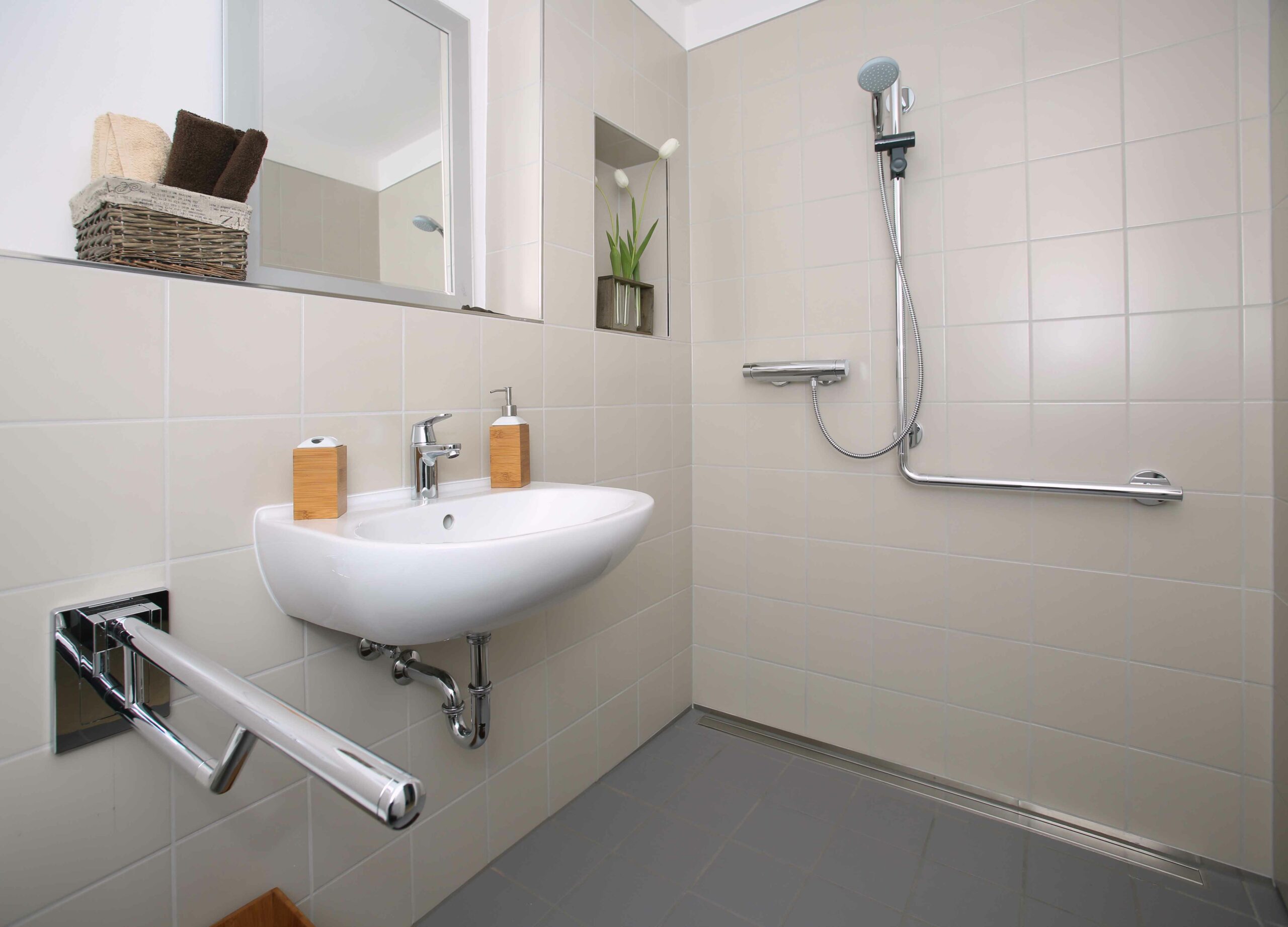When it comes to creating a safe and stylish bathroom, choosing the right flooring is crucial. Ensuring that your bathroom is both aesthetically pleasing and functional can be a challenge. However, installing slip resistant stone flooring can help achieve both goals. Bathrooms are wet environments where slips and falls are common, making slip resistant stone flooring an essential consideration for every homeowner.

Why Choose Slip Resistant Stone Flooring?
Stone flooring, known for its durability and timeless appeal, is a popular choice for bathrooms. But not all stone floors are created equal. Opting for slip resistant options is important to enhance safety without compromising on style. By choosing the right type of stone and finish, you can create a bathroom that is both elegant and secure.
The Benefits of Slip Resistant Stone Flooring
Slip resistant stone flooring offers numerous benefits. First, it provides a safer surface that reduces the risk of accidents, particularly in wet areas such as bathrooms. Additionally, stone is incredibly durable, meaning it can withstand the test of time and heavy foot traffic. Finally, stone flooring is available in a wide range of styles and finishes, allowing homeowners to customize their spaces to their preferences.
Types of Stone Suitable for Bathrooms
Not all stones are suitable for bathroom environments. It is essential to choose stones that naturally resist water and provide a good grip. Some of the best stones for bathrooms include slate, granite, and limestone.
Slate
Slate is a popular choice for bathrooms due to its natural slip resistant properties. Its textured surface provides excellent grip, making it ideal for wet environments. Additionally, slate offers a rustic and unique appearance that adds character to any bathroom.
Granite
Granite is another excellent choice for bathroom flooring. Known for its durability, granite can withstand moisture and heavy use. While polished granite can be slippery when wet, honed or textured finishes improve its slip resistance.
Limestone
Limestone is a softer stone that provides a warm and inviting look. When sealed properly and finished with a honed surface, limestone can offer adequate slip resistance in the bathroom.
Installation Considerations
Installing slip resistant stone flooring bathroom requires careful planning and execution. Proper installation ensures that the flooring not only looks good but also performs well in terms of safety and durability. Here are some key factors to consider:
Professional Installation
Hiring a professional installer is highly recommended for stone flooring. Professionals have the skills and tools necessary to ensure that the flooring is laid correctly, minimizing the risk of slippage and other issues. Additionally, they can offer advice on the best types of stones and finishes for your specific bathroom needs.
Sealing and Maintenance
Sealing stone flooring is crucial to prevent moisture absorption, which can lead to stains and damage. Regular maintenance, including cleaning and resealing, will help preserve the stone’s appearance and slip resistance over time.
Design Tips for a Stylish Bathroom
While functionality and safety are top priorities, aesthetics should not be overlooked. Here are some design tips to help you create a beautiful bathroom with slip resistant stone flooring:
Color Coordination
Choose stone colors that complement your bathroom’s color scheme. Neutral tones like grey, beige, or soft earth colors can create a calming and cohesive look.
Accent Features
Consider using stone tiles as accent features, such as a feature wall or around a bathtub. This adds visual interest and enhances the overall design.
Lighting
Good lighting is essential in a bathroom to highlight the beauty of stone flooring. Incorporate a mix of task and ambient lighting to create a warm and inviting atmosphere.
Safety Features to Consider
Beyond flooring, there are other safety features you can incorporate into your bathroom to further reduce the risk of slips and falls:
Grab Bars
Installing grab bars near the shower, bathtub, and toilet provides extra support and stability for users.
Non-Slip Mats
Place non-slip mats in areas prone to water exposure, such as outside the shower or bathtub. This adds an additional layer of protection.
Childproof Faucet Covers
Using childproof faucet covers can prevent accidental burns and ensure a safer bathroom environment for young children.
Additional Resources
For more information on bathroom safety, consider visiting StoryPoint’s bathroom safety tips. They offer a wealth of information on creating safe spaces for the elderly and those with mobility challenges.

FAQs
What is the best stone flooring for a bathroom?
Slate, granite, and limestone are among the best choices for bathroom stone flooring due to their natural slip resistant properties and durability.
How can I maintain my stone bathroom floor?
To maintain your stone bathroom floor, regularly clean and reseal it to protect against moisture and stains. This will help preserve both its appearance and functionality.
Are there other safety features to consider in a bathroom?
Yes, consider installing grab bars, using non-slip mats, and opting for features like bathroom safety sensors to enhance safety further.
This article contains affiliate links. We may earn a commission at no extra cost to you.

